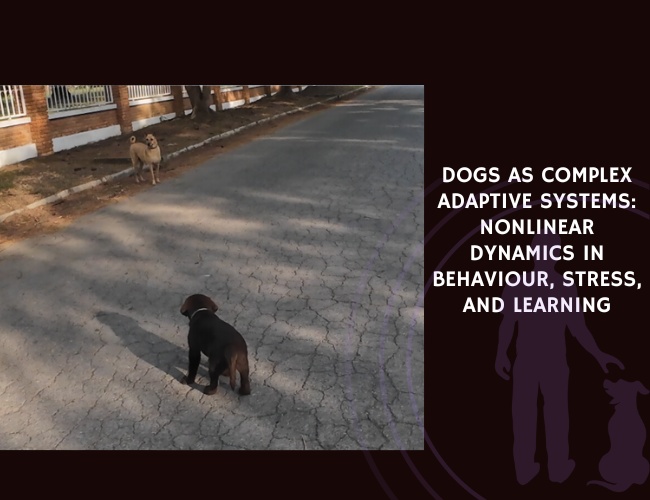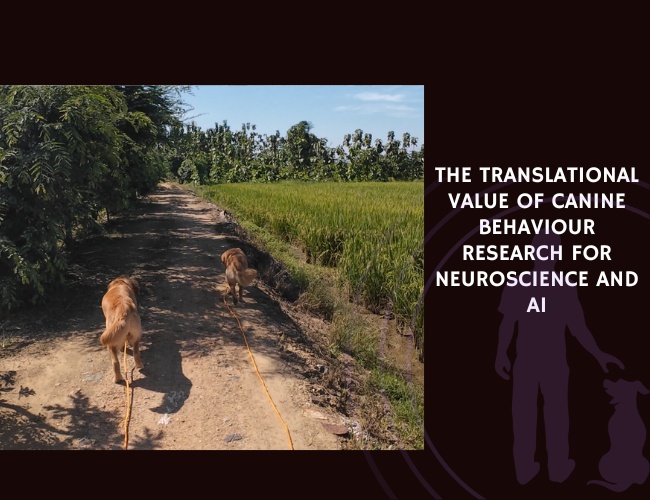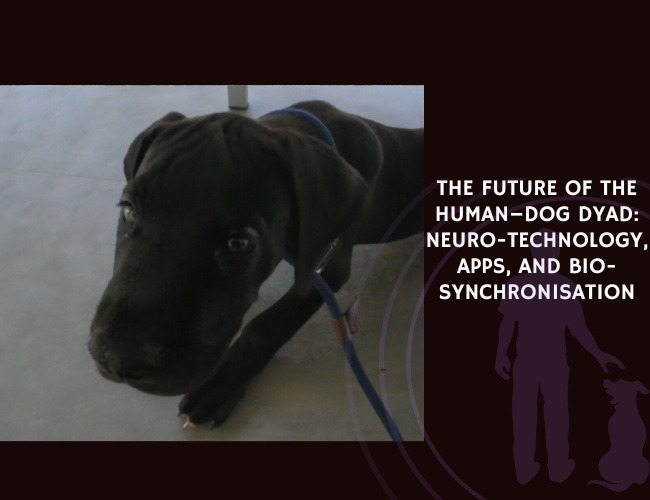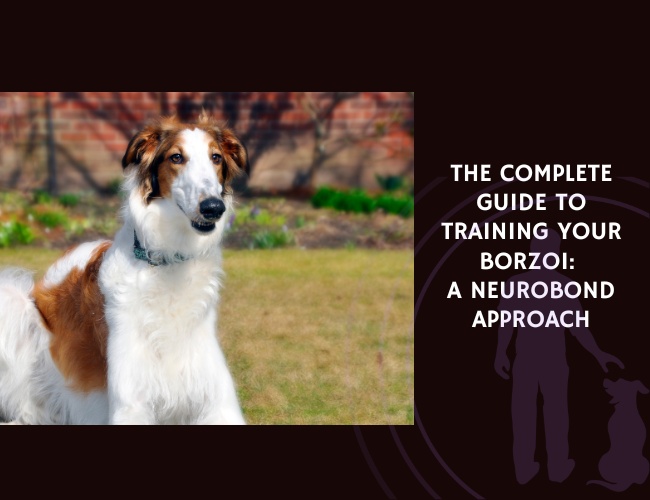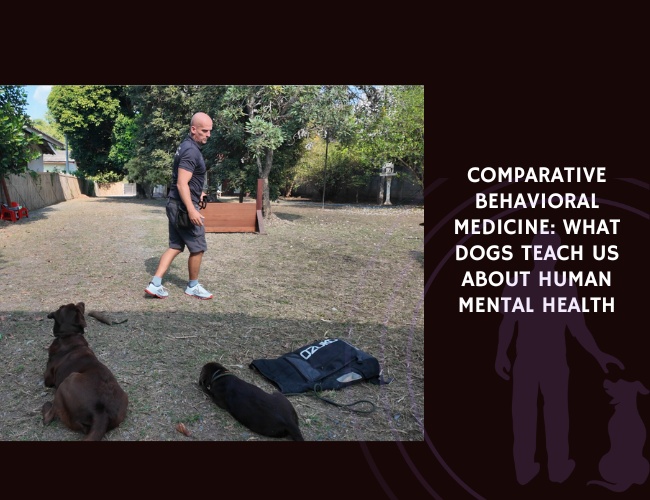Introduction: Your Dog’s Hidden Complexity
Have you ever wondered why your perfectly trained dog suddenly “forgets” everything during a thunderstorm? Or why that small change in routine triggered an unexpected behavioral meltdown? Welcome to the fascinating world of dogs as complex adaptive systems—where your furry friend isn’t just responding to commands but navigating an intricate web of neurological, physiological, and social interactions that shape every wag, bark, and cuddle.
For too long, we’ve approached dog behavior like a simple equation: command plus reward equals obedience. But emerging research reveals something far more beautiful and intricate. Your dog is a dynamic, adaptive system—constantly processing, learning, and evolving through nonlinear patterns that mirror the complexity of nature itself. This revolutionary understanding doesn’t just change how we train our dogs; it transforms how we live with them, support them, and help them thrive in our shared world.
Character & Behavior: The Emergence of Personality
Understanding Your Dog’s Behavioral Symphony
When you watch your dog navigate their day, you’re witnessing an extraordinary orchestra of subsystems working in concert. Their neurological pathways fire in complex patterns, stress hormones ebb and flow like tides, and social memories shape split-second decisions. This isn’t just behavior—it’s emergence in action.
The Three Pillars of Canine Complexity:
- Neurological dynamics: Individual neurons in your dog’s brain maintain what scientists call “dynamic equilibrium,” constantly adjusting to fluctuating inputs while maintaining stable overall activity
- Physiological responses: Hormonal cascades that can amplify or dampen behavioral responses within milliseconds
- Social programming: Early experiences that create lasting templates for stress regulation and social bonding
Did you know that dogs rescued from adverse conditions show permanently altered cortisol patterns? These brave souls don’t just “remember” trauma—their entire stress-response system has been rewired, making them more susceptible to what researchers call “behavioral tipping points.” Understanding this helps us approach rescue dogs with the patience and insight they deserve 🧡
The Dance of Chaos and Order
Your dog’s behavior might seem unpredictable at times—one moment calmly napping, the next frantically zooming around the backyard. But this apparent chaos conceals a deeper order. Like weather systems or stock markets, dogs exhibit what complexity scientists call “emergent patterns”—organized behaviors that arise from the interaction of simpler components.
Recognizing Emergent Behaviors:
- That “random” sniffing pattern during walks? It’s actually sophisticated information gathering
- The sudden breakthrough in training after weeks of “failure”? Your dog’s neural networks were reorganizing beneath the surface
- Those inexplicable moments of perfect synchronization with your mood? That’s bidirectional feedback loops in action
This dynamic interplay between chaos and order isn’t a bug—it’s a feature. It allows your dog to remain flexible and resilient, adapting to our constantly changing human world while maintaining their essential canine nature.
Stress as a Nonlinear Journey
When Small Triggers Create Big Waves
Imagine filling a glass with water, drop by drop. For the longest time, nothing dramatic happens—until that one final drop causes an overflow. This is exactly how stress works in your dog’s complex system. What we often dismiss as “overreacting” is actually a sophisticated nonlinear response to accumulated stressors.
Your dog might tolerate the mailman, the neighbor’s cat, and even that annoying leaf blower. But add one more element—perhaps a slight change in your routine—and suddenly you’re dealing with a full-blown anxiety response. This isn’t defiance or drama; it’s a system pushed past its tipping point.
Early Warning Signs Before the Tipping Point:
- Subtle changes in breathing patterns
- Increased scanning of the environment
- Micro-tensions in facial muscles
- Slight alterations in tail carriage
Understanding these precursors allows you to intervene before your dog reaches that critical threshold. You become not just an owner, but a skilled navigator of your dog’s emotional landscape.
The Feedback Loop Between You and Your Furry Friend
Here’s something that might surprise you: your stress doesn’t just affect you—it creates ripples through your dog’s entire behavioral system. Research reveals that dogs and their humans engage in what scientists call “escalating bidirectional feedback loops.” Simply put, your anxiety feeds their anxiety, which amplifies your concern, creating a spiral that can quickly escalate.
But here’s the beautiful flip side—these same feedback loops work for calm and joy too! When you consciously regulate your breathing and energy, you become your dog’s emotional anchor. You’re not just training behaviors; you’re co-creating an emotional ecosystem where both of you can thrive.
Breaking Negative Cycles:
- Practice mindful breathing before interacting with your anxious dog
- Create “calm zones” in your routine where both of you decompress
- Use your body language as a communication tool—relaxed shoulders tell your dog “all is well
Building Resilience Through Adaptive Recovery
Resilience isn’t about never experiencing stress—it’s about bouncing back stronger. For our canine companions, this means creating what researchers call “adaptive stress-recovery cycles.” Think of it like exercise for their coping mechanisms.
The Four Stages of Canine Resilience Building:
- Controlled exposure: Introducing manageable challenges in safe contexts
- Stress response: Allowing natural physiological reactions to occur
- Coping activation: Supporting your dog as they employ their stress-management strategies
- Recovery and integration: Ensuring complete return to baseline with enhanced capacity
Each successful cycle strengthens your dog’s ability to handle future challenges. You’re not protecting them from stress—you’re teaching them they can survive and thrive despite it 🐾
Learning in Nonlinear Trajectories
The Mystery of Sudden Breakthroughs
Have you ever spent weeks teaching your dog something, seeing no progress, only to witness them suddenly “get it” overnight? This phenomenon perfectly illustrates nonlinear learning trajectories. Your dog’s brain wasn’t failing during those unsuccessful attempts—it was gathering data, exploring possibilities, and reorganizing neural pathways beneath the surface.
Think of it like solving a jigsaw puzzle in the dark. For the longest time, you’re just feeling pieces, trying combinations that don’t work. But each “failure” provides crucial information. Then suddenly, enough pieces align, and the whole picture becomes clear. This is exactly what happens in your dog’s learning process.
Supporting Nonlinear Learning:
- Embrace the “plateau” phases—learning is happening even when you can’t see it
- Vary your training contexts to provide rich data for pattern recognition
- Celebrate small variations in behavior—they signal internal processing
- Trust the process even when progress seems invisible
The Power of Predictive Error Correction
Your dog’s brain is essentially a prediction machine, constantly forecasting what will happen next based on past experiences. When reality doesn’t match the prediction—what scientists call a “predictive error”—the brain updates its model. This is where real learning happens.
Variable reinforcement schedules work so well because they keep your dog’s predictive system actively engaged. Instead of creating rigid expectations (“sit always equals treat”), you’re teaching flexible understanding (“sit usually leads to good things, but the specifics vary”). This creates more robust, adaptable behaviors that persist even when circumstances change.
Optimizing Predictive Learning:
- Mix up reward types and timing to maintain engagement
- Create situations where your dog must problem-solve to predict outcomes
- Use “jackpot” rewards occasionally to create positive predictive errors
- Allow controlled mistakes—they’re valuable data points for learning
Embracing Chaotic Exploration in Skill Development
Watch a puppy learning to navigate stairs, and you’ll see chaos in action—different paw placements, varying speeds, occasional tumbles. This variability isn’t incompetence; it’s intelligent exploration of motor solutions. Research reveals that this “chaotic exploration” phase is crucial for developing robust, adaptable skills.
Traditional training often tries to eliminate variability, forcing dogs into rigid patterns. But complex systems science tells us that variability is the seedbed of mastery. Dogs trained with varied practice conditions don’t just learn specific behaviors—they develop problem-solving frameworks that transfer to novel situations.
Incorporating Beneficial Chaos:
- Practice commands in different locations with varying distractions
- Allow your dog to find multiple solutions to the same problem
- Introduce novel elements regularly to maintain cognitive flexibility
- View “mistakes” as valuable exploration rather than failures
Advanced Behavioral Diagnostics
Pattern Recognition Over Isolated Incidents
That one time your dog snapped at a child isn’t the whole story. Neither is that single perfect recall at the dog park. Understanding your dog requires recognizing patterns across time, context, and emotional states. This shift from incident-focused to pattern-aware thinking revolutionizes how we assess and address behavioral challenges.
Modern behavioral science uses sophisticated pattern recognition algorithms, similar to those detecting credit card fraud or predicting weather systems. While we can’t run computer algorithms on our dogs (yet!), we can adopt pattern-thinking approaches that reveal the hidden dynamics driving behavior.
Building Your Pattern Recognition Skills:
- Keep a behavior journal noting time, context, preceding events, and outcomes
- Look for sequences rather than single behaviors
- Identify environmental or social triggers that precede concerning behaviors
- Notice recovery patterns—how long does it take your dog to return to baseline?
Multi-Modal State Assessment
Understanding your dog’s dynamic states requires more than just observing behavior. Like a physician using multiple diagnostic tools, we need to assess various indicators to capture the full picture of our dog’s internal experience.
Key Metrics for State Assessment:
Heart Rate Variability (HRV): This sophisticated measure reveals autonomic nervous system activity, indicating whether your dog is in a state of stress, relaxation, or arousal. Higher variability generally indicates better stress resilience and emotional regulation.
Cortisol Patterns: Not just the level, but the rhythm of cortisol release tells a story. Healthy dogs show predictable daily patterns, while stressed dogs might exhibit flattened or erratic cortisol curves.
Behavioral Ethograms: Detailed catalogs of micro-behaviors—ear positions, tail angles, weight distribution—create a behavioral fingerprint unique to your dog’s emotional states.
Temperature Fluctuations: Stress often causes peripheral cooling as blood flow centralizes. Those cold paws might be telling you something important about your dog’s internal state.
Complex. Adaptive. Alive.
Dogs are dynamic systems. Their behaviour emerges from constant interaction between brain activity, hormones, and social memories, creating unique patterns beyond simple training formulas.
Chaos conceals order. What looks random—sniffing, sudden zoomies, or training breakthroughs—are emergent behaviours shaped by hidden neural and physiological reorganisations.

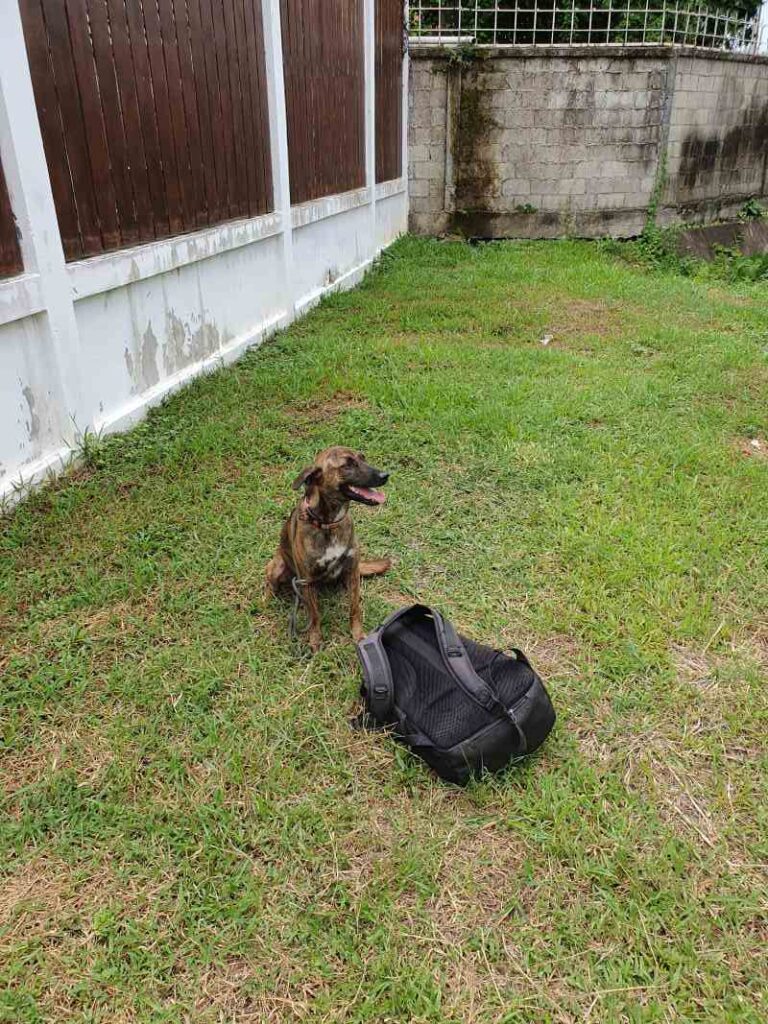
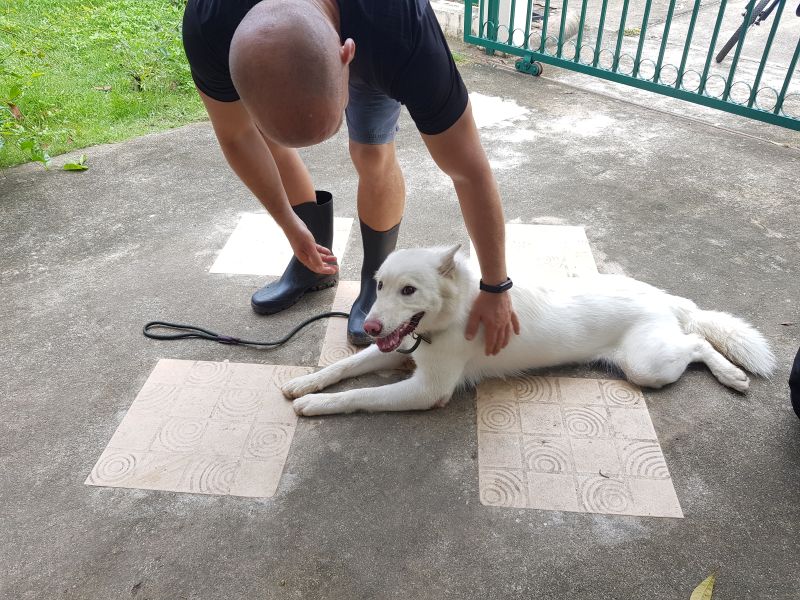
Resilience thrives in feedback. Through loops of adaptation, dogs mirror moods, overcome past trauma, and reveal the beauty of complexity guiding every wag and response.
Training Revolution: From Linear Commands to System Optimization
Reframing Training Through Complexity
Traditional training treats dogs like input-output machines: give command, get behavior, deliver reward. But understanding dogs as complex adaptive systems transforms training into something far more sophisticated and effective. You’re not programming a computer; you’re nurturing an intelligent, adaptive system capable of incredible learning and growth.
The Complex Systems Training Approach:
Instead of isolated command training, focus on building cognitive frameworks. Teach concepts rather than just behaviors. For example, rather than just “sit,” teach the concept of “settling”—which might manifest as sit, down, or simply calm attention depending on context.
Create training scenarios that mirror real-world complexity. Practice recall not just in your backyard, but with varying distractions, distances, and emotional states. You’re building a robust response system, not just a single behavior.
Embrace emergence in training. Sometimes the best outcomes aren’t the ones you planned. That creative problem-solving your dog displays? That’s their complex adaptive system finding novel solutions. Reward innovation alongside compliance.
Structured Flexibility: The Sweet Spot of Routine
Your dog needs routine—it provides security and predictability in an often chaotic human world. But rigid routines create fragile dogs who crumble when anything changes. The solution? Adaptive routines that balance structure with flexibility.
Creating Adaptive Routines:
- Maintain consistent anchors (meal times, sleep schedule) while varying details
- Introduce “surprise enrichment”—unexpected positive experiences within routine
- Practice “routine disruption drills” where changes are paired with positive outcomes
- Build in choice points where your dog can influence routine elements
This approach creates what scientists call “antifragile” dogs—those who don’t just withstand change but actually grow stronger from it. You’re not protecting your dog from life’s unpredictability; you’re preparing them to surf its waves with confidence 🧠
Environmental Applications: From Home to Shelter
Multi-Dog Household Dynamics
When you have multiple dogs, you’re not managing individuals—you’re conducting a complex system where each dog’s behavior influences and is influenced by others. One anxious dog can create ripples of stress throughout the pack, while one confident dog can stabilize the entire group dynamic.
System Management Strategies:
- Identify “keystone” dogs whose emotional state disproportionately affects others
- Create separate spaces for individual stress recovery
- Monitor group tipping points—signs the collective stress is approaching critical levels
- Use parallel walking and synchronized training to build group cohesion
Understanding these dynamics helps prevent small tensions from escalating into major conflicts. You become less referee and more ecosystem manager, nurturing conditions where harmony naturally emerges.
Shelter Applications: Managing Chaos with Compassion
Shelters represent extreme complex systems challenges—constant flux, high stress, minimal predictability. Yet understanding complexity science offers revolutionary approaches to shelter management that can dramatically improve outcomes for these vulnerable dogs.
Complexity-Informed Shelter Practices:
Create micro-stabilities within macro-chaos. Even small predictable elements—a familiar blanket, consistent feeding volunteer—can serve as stress-buffering anchors.
Recognize that behavioral assessments in shelters might capture stress responses rather than true temperament. A dog at their tipping point isn’t showing you who they are—they’re showing you their emergency response system.
Design kennel layouts that account for stress contagion. Strategic placement can prevent one stressed dog from triggering cascade effects throughout the facility.
Implement graduated exposure protocols that respect nonlinear stress responses. What seems like a small step to us might be a massive leap for a dog already near their threshold.
Therapy Dogs in Unpredictable Settings
Therapy dogs face unique challenges—they must maintain stability while navigating constantly changing environments and human emotional states. This requires exceptional complex systems management, both from the dog and their handler.
Supporting Therapy Dog Resilience:
- Build extensive “behavioral repertoires” through varied training
- Develop strong recovery protocols between sessions
- Monitor for cumulative stress that might not show immediately
- Create portable stability anchors (familiar mat, specific scents)
These remarkable dogs aren’t just well-trained—they’re masters of adaptive behavior, constantly adjusting their responses to meet the needs of diverse humans while maintaining their own emotional equilibrium. Understanding their work through a complex systems lens helps us better support these canine heroes.
Health and Nutrition in Complex Systems
The Gut-Brain-Behavior Axis
Your dog’s digestive system isn’t just processing food—it’s actively influencing mood, behavior, and stress resilience through what scientists call the gut-brain axis. This bidirectional communication highway means that digestive health directly impacts behavioral health and vice versa.
Nutritional Strategies for System Balance:
- Incorporate prebiotic and probiotic foods to support beneficial gut bacteria
- Maintain consistent feeding schedules to regulate cortisol rhythms
- Consider how food sensitivities might contribute to behavioral instability
- Use food puzzles to engage cognitive systems during nutrition delivery
This holistic view transforms mealtime from simple fuel delivery to an opportunity for system-wide optimization. You’re not just feeding your dog; you’re nourishing their entire complex adaptive system 🧡
Exercise as System Regulation
Physical activity does more than tire out your dog—it serves as a powerful system regulator, influencing everything from neurotransmitter production to stress hormone metabolism. But not all exercise is created equal when viewed through a complexity lens.
Complex Systems Exercise Principles:
- Vary intensity and duration to prevent habituation
- Include both predictable and novel movement patterns
- Incorporate problem-solving into physical activity
- Allow for self-directed exploration alongside structured exercise
The goal isn’t exhaustion—it’s optimization. You’re using movement to help your dog’s system find its natural balance points, building resilience and adaptability along with physical fitness.
Senior Dogs: Navigating System Changes
Adapting to Cognitive Shifts
As dogs age, their complex adaptive systems undergo fundamental changes. Neural plasticity decreases, stress recovery slows, and behavioral patterns become more rigid. Understanding these shifts through a complexity lens helps us provide better support for our senior companions.
Supporting Aging Systems:
- Maintain cognitive stimulation while respecting reduced processing speed
- Create more predictable environments while still offering gentle novelty
- Recognize that behavioral changes might reflect system-wide aging, not just “stubbornness”
- Adjust expectations while maintaining enrichment opportunities
Your senior dog isn’t just “slowing down”—they’re navigating a fundamental reorganization of their complex adaptive system. Your role shifts from trainer to gentle guide, helping them find new balance points as their system evolves.
Managing Multi-System Decline
Senior dogs often face cascading system challenges—arthritis affects movement, which reduces exercise, which impacts mood, which influences appetite, which affects nutrition, creating interconnected cycles of decline. Addressing these requires systems thinking rather than symptom management.
Integrated Senior Care Strategies:
- Address pain proactively to prevent behavioral cascade effects
- Maintain social connections that provide emotional stability
- Adapt rather than eliminate beloved activities
- Monitor for tipping points where small changes trigger large impacts
This integrated approach recognizes that supporting one system supports them all. You’re not just managing old age—you’re optimizing the entire complex system for maximum quality of life.
The Future of Human-Canine Relationships
Technology Meets Complexity
Emerging technologies are beginning to capture and analyze the complex dynamics of canine behavior. From AI-powered behavior prediction to real-time stress monitoring, we’re entering an era where we can truly see our dogs as the complex systems they are.
Emerging Tools and Applications:
- Wearable devices that track HRV and activity patterns
- Apps that use pattern recognition to predict behavioral changes
- Virtual reality training environments that safely test stress responses
- Genetic testing that reveals predispositions to certain system dynamics
These tools don’t replace intuition and connection—they enhance our ability to understand and support our dogs at a systems level. You’re becoming a more informed, capable guardian of your dog’s complex adaptive system.
Reimagining the Human-Dog Bond
Understanding dogs as complex adaptive systems doesn’t diminish the magic of our relationship—it deepens it. When you recognize the intricate dance of feedback loops between you and your dog, every interaction becomes an opportunity for mutual growth and adaptation.
This perspective transforms common challenges into fascinating puzzles. That “stubborn” dog might be navigating conflicting system pressures. That “hyperactive” dog might be seeking the variability their system craves. That “anxious” dog might be caught in feedback loops we unknowingly reinforce.
Conclusion: Is This Approach Right for You?
If you’ve made it this far, you’re likely someone who senses there’s more to your dog than simple commands and rewards. You’ve probably noticed the patterns, wondered about the sudden changes, and intuited the deep complexity within your furry friend. This complex systems approach isn’t just another training method—it’s a fundamental shift in how we understand and relate to our canine companions.
This approach might be for you if:
- You’re curious about the “why” behind behaviors, not just the “how” to fix them
- You’re willing to embrace uncertainty and nonlinear progress
- You value building resilience over maintaining control
- You see your dog as a partner in a dynamic, evolving relationship
The journey of understanding your dog as a complex adaptive system isn’t always straightforward—much like the systems we’re studying, it involves plateaus, sudden breakthroughs, and beautiful emergent moments of connection. But for those willing to embrace this complexity, it offers something invaluable: a deeper, more authentic relationship with the remarkable being sharing your life.
Your dog isn’t a problem to be solved or a machine to be programmed. They’re a living, breathing complex system—capable of incredible adaptation, surprising emergence, and profound connection. By understanding and working with their complexity rather than against it, you open doors to possibilities you never imagined. Welcome to the beautiful, chaotic, endlessly fascinating world of dogs as complex adaptive systems 🐾
Every tail wag tells a story of neural networks firing in perfect synchrony. Every successful training session represents thousands of micro-adaptations happening beneath the surface. Every moment of perfect connection with your dog is an emergence—something greater arising from the intricate dance of two complex systems finding harmony. This isn’t just dog ownership; it’s participation in one of nature’s most beautiful examples of complex adaptive systems at work.
The next time your dog surprises you—with sudden learning, unexpected behavior, or perfect intuition about your emotional state—remember: you’re not just witnessing behavior. You’re seeing complexity in action, adaptation in real-time, and the beautiful emergence that happens when two complex systems—human and canine—create something neither could achieve alone.

